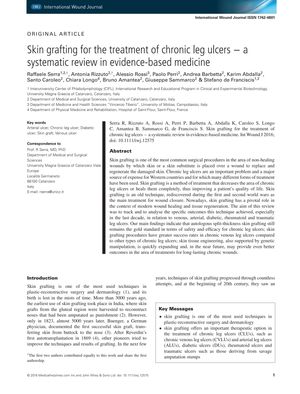Skin Grafting for the Treatment of Chronic Leg Ulcers: A Systematic Review in Evidence-Based Medicine
March 2016
in “
International Wound Journal
”

TLDR Skin grafts are effective for chronic leg ulcers, especially autologous split-thickness grafts for venous ulcers, but more data is needed for diabetic ulcers.
The systematic review from 2016 evaluated the efficacy and safety of skin grafting for chronic leg ulcers (CLUs), particularly chronic venous leg ulcers (CVLUs). It found that autologous split-thickness skin grafts (STSGs) are the gold standard for CVLUs due to their high success rates and safety profile. The review also noted advancements in skin tissue engineering, including genetic manipulation, which may improve future treatments for chronic wounds. The importance of postoperative care and managing underlying causes of ulcers to prevent recurrence was emphasized. While STSGs are effective for diabetic ulcers (DUs) and rheumatoid ulcers (RUs), and in salvaging amputation stumps, the review indicated a lack of sufficient data on healing rates for DUs treated with skin grafting. The document concluded that skin grafts are a valuable second-line treatment for CLUs when standard treatments fail, with autologous STSGs being particularly effective for CVLUs. However, the strength of the evidence could not be determined due to the lack of specified numbers of studies or patients involved in the review.




